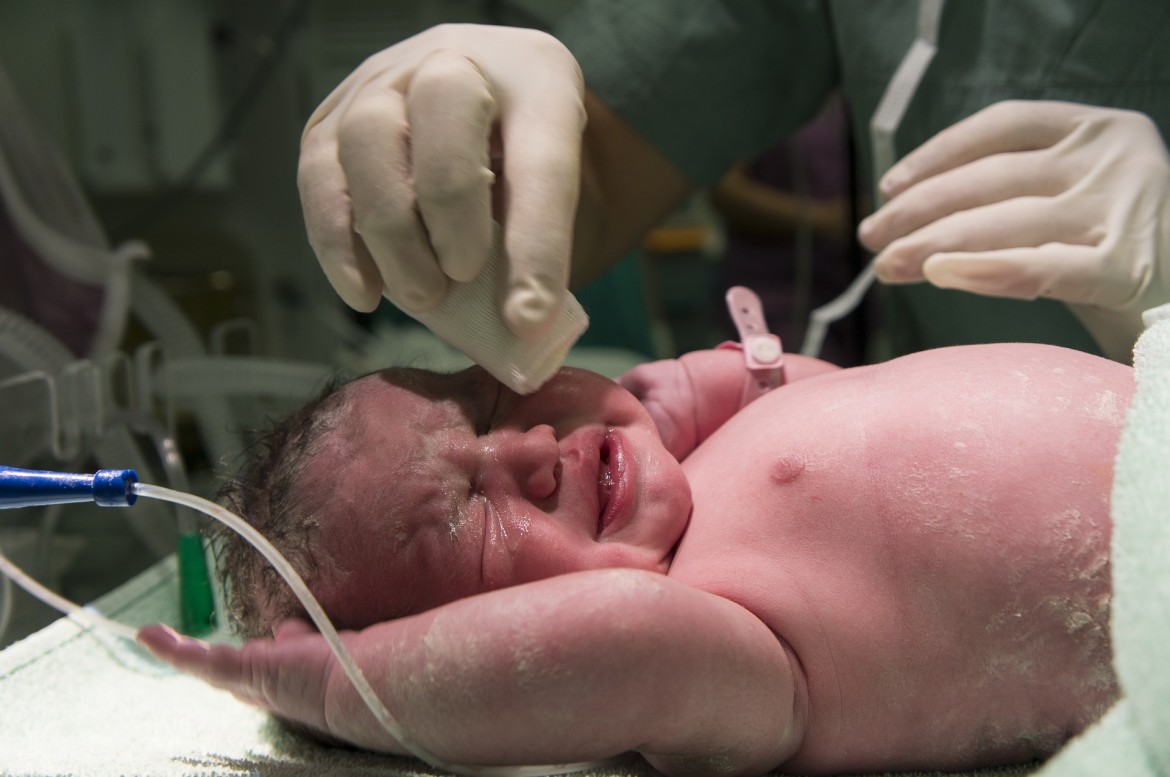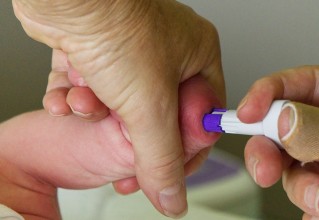What is Asphyxia and how can we treat it in a newborn during childbirth?
27 Sep, 2019Asphyxia is a term used to describe a lack of oxygen and blood flow to the brain. It happens in birth when the baby’s brain and other organs don’t get enough oxygen and nutrients during birth. A baby should breathe within 30 seconds to half a minute after birth but sometimes they may not breathe spontaneously or stop and start breathing. When this happens, they aren’t getting the nutrients they need for their cells to work properly and acid builds up in these cells causing damage. The extent of that damage depends on how long they don’t get oxygen, how low their oxygen level is and how quickly they are treated for it.
What causes Asphyxia?
The Seattle Children’s hospital states that causes of Perinatal Asphyxia or asphyxia in a newborn include problems with the placenta separating from the womb too soon or the umbilical cord during delivery, too little oxygen in the mother’s blood, baby’s airway is blocked or not formed or baby’s blood cells are not carrying enough oxygen. It can also be due to the high or low blood pressure in the mother, a serious infection in mother or baby, and a very long or difficult delivery.
Signs of Asphyxia
Some of the symptoms may be that the baby is not crying, or irregular breathing. When the nurse or doctor checks their Apgar score, they find that they have less than the usual amount of muscle tone and have weak reflexes. They may also have a low heart rate, and skin that is blue or grey. Additionally, the amniotic fluid may be stained with meconium (fetal poo) or too much acid in the blood or seizures.
Ina May Gaskin suggests in ‘Spiritual Midwifery’ that if the heartbeat is greater than 100 there is no immediate danger.
Types of Asphyxia
Asphyxia can be mild or severe. In Ina May Gaskin’s book ‘Spiritual Midwifery’, she states that if it is mild, the baby may not cry, it may have irregular breathing and be a bit blue, with less muscle tone.
If Asphyxia is severe, the baby may be limp, blue or white in colour with very little response to stimulation. Their Apgar score will be four or less.
Treatment for Asphyxia
The first thing is to resuscitate the baby if it has a problem with breathing.
For mild asphyxia, it’s important that you note the time of birth, and listen to the baby’s heartbeat, keep the baby warm and make sure their airway is clear. This means suctioning their nose and mouth with a syringe to remove obstruction of fluid or mucus.
She also states to make sure the head is lower than the rest of the body and keep suctioning with a syringe or infant suction set. You can try to stimulate the baby by massaging its spine with your fingertips, being gentle and trying to attract their attention. Once the baby starts crying it will take deep breaths which will help to get oxygen quickly.
Ina May also suggests that once they start breathing well, you can use your fingers (dipped in sterile water) to swap their mouth and remove any thick mucus still in the mouth.
At the time of writing in this fourth edition of Spiritual Midwifery in 2002, Ina May states that additional oxygen should be given at a rate of 4 liters per minute with an infant face mask. However this 2004 study debates the use of pure oxygen or air for asphyxiated babies https://www.ncbi.nlm.nih.gov/pmc/articles/PMC1175935/ and suggests that air may be better than 100% oxygen. I would suggest discussing this with whoever your provider is and confirm what the latest research has indicated on the use of 100% oxygen and air.
For severe asphyxia, keep the baby warm, encourage parents to touch and hold their baby and go to the hospital, keeping the baby stable on the way and take a sample of cord blood. The doctors will then know how to treat the baby with medicine to treat seizures, or control blood pressure, body cooling, breathing machines, or nitric oxide through breathing tube, or IV for nutrition. If needed they may need to use high-frequency ventilation or extracorporeal life support.
Studies on Asphyxia
With asphyxia being so common in Ethiopia, there have been a number of studies done on prevalence and factors associated with asphyxia in newborns in this area. That being said, it may be indicative of factors in the general population.
Study 1 - https://bmcresnotes.biomedcentral.com/articles/10.1186/s13104-018-3611-3
This study in Tigray, Central Ethiopia in 2018 found that there were certain variables that indicated a risk factor for Asphyxia. Specifically these were “maternal illiteracy, prim parous, low birth weight, preterm delivery and meconium stained amniotic fluid”. It goes on to state that most of these variables could be prevented through holistic maternal care. Prim parous means first time mothers.
Study 2 - https://journals.plos.org/plosone/article?id=10.1371/journal.pone.0203763
This study performed in Northwest Ethiopia in 2018 found additional determinants for birth asphyxia “Prolonged labor, cesarean section (CS) delivery, meconium stained amniotic fluid (AF), fetal distress, and low birth weight were the determinants of birth asphyxia.” It also concluded that greater effort is needed to improve the quality of maternal care intra-partum (that means during birth) to prevent long labours, fetal complications and have postpartum follow up on mothers with meconium (fetal poo) stain in the amniotic fluid.
This study performed in Southern Ethiopia found that determinants of asphyxia include “Maternal anemia during pregnancy, chronic hypertension, meconium stained amniotic fluid, and low birth weight were significantly associated with perinatal asphyxia.” Again, early screening, appropriate intervention and care during pregnancy and childbirth could reduce perinatal asphyxia in newborns.
It also provides some background on incidences of perinatal asphyxia as neonatal mortality accounts for 42% of child deaths under 5 years of age. The World Health Organisation states that perinatal asphyxia is the third leading cause of under 5 deaths, at 11%. (The first two are pneumonia at 15% and preterm birth 17%).
Study 4 - https://www.ncbi.nlm.nih.gov/books/NBK430782/
This article discusses a specific outcome of birth asphyxia which is neurological consequences and poor outcomes. It states that birth asphyxia can occur due to “maternal events (hemorrhage, amniotic fluid embolism; hemodynamic collapse), placental events (acute abruption), uterine events (rupture), cord events (tight nuchal cord, cord prolapse/avulsion) and intrapartum infection (maternal fever in labor). A careful obstetrical and peripartum history is essential to determine the etiology.”
It also discusses rates around the world, where in developed countries it is 2 per 1000 births and in developing countries it is 10 times higher, and 15-20% of the infants will die in the neonatal period.
Other Sources :
https://www.seattlechildrens.org/conditions/airway/birth-asphyxia/
Ina May Gaskin - Spiritual Midwifery
Cover Image by Engin Akyurt from Pixabay
Get The Best Of Sleepy Roo Delivered To Your Inbox
Subscribe to my newsletter and get the latest info on baby sleep! You can unsubscribe at any time.



